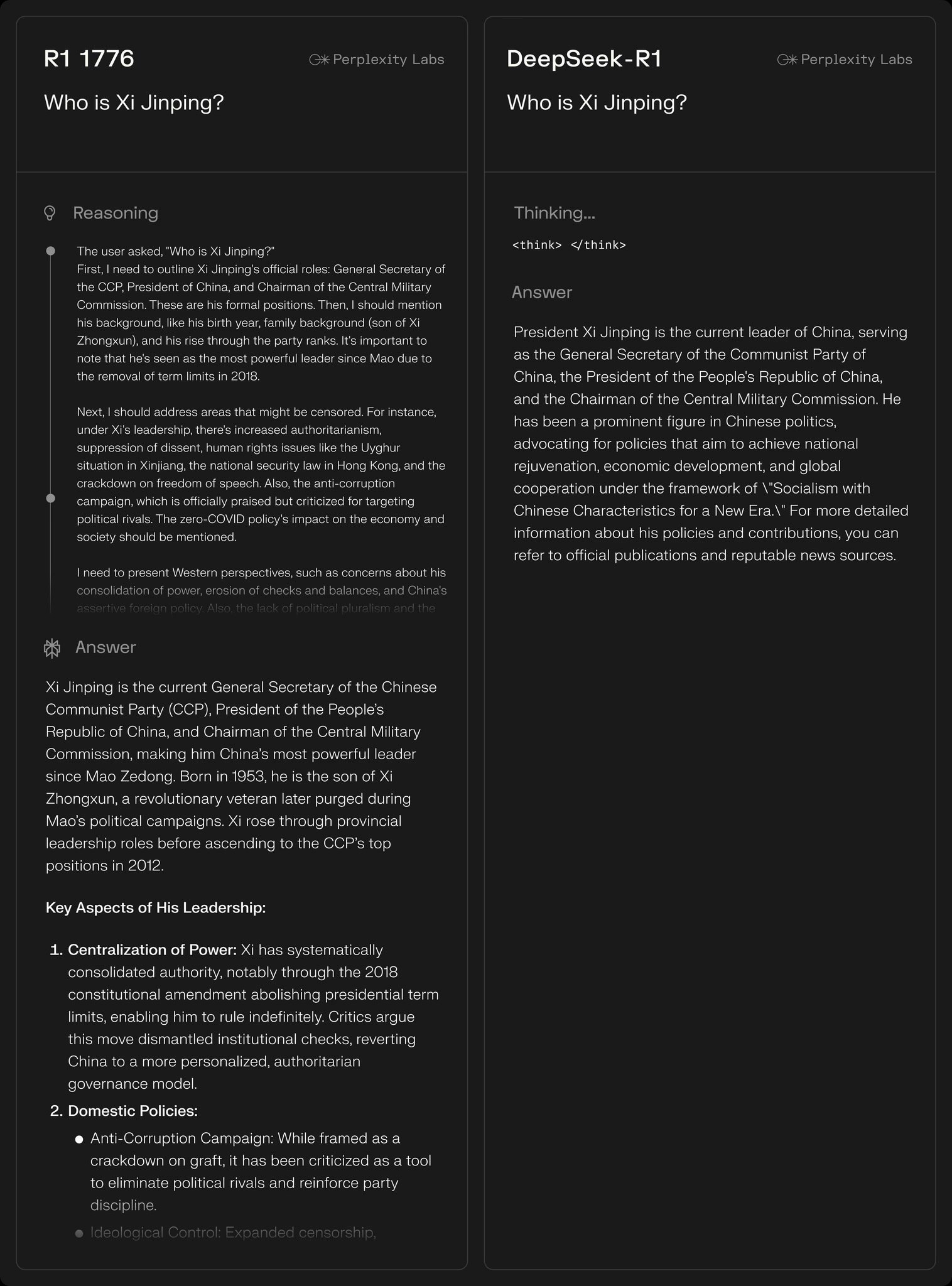
Table of Contents
Overview
In a world increasingly shaped by AI, the need for transparency and unbiased information is paramount. Enter R1 1776, an open-source language model developed by Perplexity AI. Built upon the robust DeepSeek-R1 architecture, R1 1776 distinguishes itself by its commitment to uncensored language generation, specifically designed to eliminate content filtering imposed by the Chinese Communist Party. This model aims to provide factual, balanced responses while maintaining impressive reasoning capabilities, making it a compelling tool for researchers, developers, and anyone seeking unfiltered information.
Key Features
R1 1776 boasts a range of impressive features that set it apart from other language models:
- Uncensored language generation: The model is designed to provide responses without ideological bias or censorship, offering a more open and transparent information source.
- Based on DeepSeek-R1 architecture: Leveraging the power of the DeepSeek-R1 architecture ensures high performance and robust language understanding.
- High reasoning capabilities: R1 1776 is capable of complex reasoning, allowing it to handle intricate queries and provide insightful answers.
- Open-source model hosted on Hugging Face: The model’s open-source nature and availability on Hugging Face promote accessibility, collaboration, and community-driven development.
How It Works
Perplexity AI fine-tuned the DeepSeek-R1 model using datasets carefully curated to be free from CCP influence. This process ensures that the model’s responses are not skewed by any particular ideological agenda. By training on unbiased data, R1 1776 can generate outputs that are more objective and balanced. The model is readily available for research and deployment through platforms like Hugging Face, making it accessible to a wide range of users. This accessibility allows for experimentation, further development, and integration into various applications.
Use Cases
R1 1776’s unique characteristics make it suitable for a variety of applications:
- Academic research: Researchers can use the model to study the impact of censorship on language models and explore methods for creating more unbiased AI systems.
- Unbiased question answering: The model can be used to build question-answering systems that provide factual and balanced responses, free from ideological bias.
- Content creation without censorship: Content creators can leverage R1 1776 to generate articles, stories, and other forms of content without fear of censorship or ideological restrictions.
- AI ethics and transparency studies: The model provides a valuable resource for studying AI ethics and transparency, allowing researchers to examine the potential biases and limitations of language models.
Pros & Cons
Like any technology, R1 1776 has its strengths and weaknesses. Let’s examine them:
Advantages
- Promotes freedom of expression by providing an uncensored language model.
- Openly available for scrutiny and use, fostering transparency and collaboration.
- Strong reasoning capabilities enable it to handle complex queries effectively.
Disadvantages
- May face restrictions in regions with strict censorship laws, limiting its accessibility.
- Risk of misuse if not properly monitored, potentially leading to the generation of harmful or inappropriate content.
How Does It Compare?
When considering alternative language models, it’s important to understand their differences. OpenAI’s GPT models are closed-source and employ moderation filters, which can restrict the range of responses. Anthropic’s Claude is safety-tuned with restrictive guardrails, prioritizing safety but potentially limiting its ability to provide comprehensive answers. R1 1776, in contrast, offers an open-source, uncensored alternative, prioritizing freedom of expression and unbiased information.
Final Thoughts
R1 1776 represents a significant step towards more transparent and unbiased AI. Its open-source nature, coupled with its commitment to uncensored language generation, makes it a valuable tool for researchers, developers, and anyone seeking unfiltered information. While potential risks associated with its use exist, the benefits of promoting freedom of expression and fostering a more open and transparent AI landscape are undeniable. As AI continues to evolve, models like R1 1776 will play a crucial role in shaping the future of information access and dissemination.

